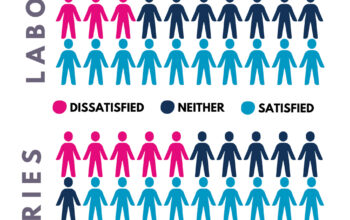
When the pandemic hit, not only was educational instruction abruptly upended; the many school and district-provided resources also had to adapt to a Covid world, and quickly.
“There’s an idea that everyone has equal access to their education,” says Roosevelt Education Interventionist Erin Bailey. “But from working with so many students, I think there’s still a huge barrier for those who need additional support.”
One of the most urgent needs in the community is access to free meals through the school system. Throughout the entire district, the percentage of students on free or reduced lunch was 32.7% in the 2017-2018 school year.
For some, the meals and additional food provided by schools is a lifeline. Continuing to fulfill this need is vital in school outreach efforts and at Roosevelt, efforts to provide meal services were quickly taken on.
A team of Roosevelt staff including Bailey, Nurse Amanda, the PTSA, and others worked last spring on preliminary efforts to provide meals to families. By this Fall, they’ve built a more permanent solution that’s expanded beyond a school food bank.
“The PTSA has helped start what’s called the Roosevelt Pantry,” Bailey explains. “Every Friday from 10-2 the pantry is open. The pantry has toiletries, school supplies, food including fresh fruits and vegetables, clothes, and socks — all those things that they have seen as a need in the community”.
Throughout the school district, meal services are being provided. At multiple sites around Seattle, families can pick up meals Monday through Friday, 11:15 to 1:15. On weekends, non-profits provide non-perishable food for pickup on Fridays at school sites.
Another issue is online engagement. Despite strong district efforts to provide technology to its 50,000 students, 4000 are still not engaging regularly or at all with online learning. It remains a mystery about how much of this is tied to lacking technology or other issues.
Kim Sciarrone, Roosevelt Academic Interventionist says, “the hardest part of my job is figuring out why students aren’t attending; is it mental health issues? Unreliable or unprovided hotspots? Confusion over school expectations?”
Bailey says that even reaching out to academically struggling students has been a challenge. Having them regularly engage may be related to that issue. Regardless, lack of educational engagement leaves a huge achievement gap in online learning which outreach specialists like Bailey are working hard to fill.
In response, she’s even been doing a number of home visits for student academic check-ins and hotspot deliveries. Never before has knocking on doors been a major part of her job. But now, many Roosevelt staff members are meeting community needs in whatever ways they can.
Another key community need is accessible healthcare in the midst of a pandemic. The pandemic has brought on what the Red Cross calls a “Global Mental Health Crisis”. In a survey, conducted by Harris Poll on behalf of the National 4-H Council of 1500 teens, 7/10 say they struggle with mental health and 45% say they are experiencing excess stress due to the pandemic.
At Roosevelt, responses to a school-wide survey of 223 current Roosevelt students showed significant levels of stress, anxiety, and depression.
From the 223 respondents, 65% say they felt more stressed than usual most or all of the time over the past 14 days. 86% of the same students say they felt at least some increased anxiety over the past two weeks.
Now more than ever, teens need accessible mental health resources and support.
Reaching out for help in the first place can be challenging. With the pandemic, it’s harder for any struggling student to get parent-anonymous mental healthcare as immediately as before.
One of the frontier services that Roosevelt provides is free physical and mental healthcare through the Teen Health Center.
Teen Health Center Coordinator Alex McGraw says, “It’s not as easy as walking down the hall anymore…kids have to go out of their way to get themselves to the clinic.” According to McGraw, the wide range of students at Roosevelt normally sees has changed; many underserved demographics in need are not seen by the Teen Health Center.
But for those willing and able to access their care, the full range of health services remains. The district has made a point of providing 30 locations, 27 at schools, of School Based Health Centers. Services at these clinics are completely free.
Mental health counseling, sports physicals, vaccinations, and dental services at select locations are available at School-Based Health Centers.
But as Bailey says, “there is a sense that things are back to normal but there needs to be a big recognition of mental health.” Some of that has been through student wellness checks provided by teachers and mandated by the district. But more support and awareness of mental health during such a trying period remains a goal of Roosevelt staff.
Another important service is childcare. In a partnership with the City of Seattle, the district provides full-day childcare for young students across the district who cannot otherwise afford it.
According to the City of Seattle, upwards of 550 students receive in-person childcare services at nearly 50 school sites throughout the district.
Childcare resources are critical for young kids to build skills for learning and grow socially in the first five years of their lives. For working parents, childcare resources can lift a huge burden of balancing work and time for their kids.
For the 14.8% of students in the SPS district receiving special education services, accommodation for their needs is challenging to fulfill through online education. Even with school support, many students in the special ed community are finding it difficult to adjust and learn as they had before the pandemic.
Mia Crump, who is enrolled in the Special Education program at Roosevelt, says she is more stressed now than before the pandemic. In a normal school setting, she says she received the right amount of support. But now, it’s harder for her to deal with less separation between in school and at homework.
Mia’s Mom, Fumiyo Kobayashi says “it’s hard” without the small group setting easily constructed under normal school circumstances. Kobayashi adds that the online school curriculum is “adapted more for you guys to digest [rather than those in the Special community] which is not fair” she “hear[s] from other mothers within the Special Ed community [within the SPS district] that they don’t have enough support.”
Providing the same quality of resources as before the pandemic is an impossible goal. But with the important actions of the Seattle School District and the Roosevelt Staff, the community comes closer to the realization of those goals.


